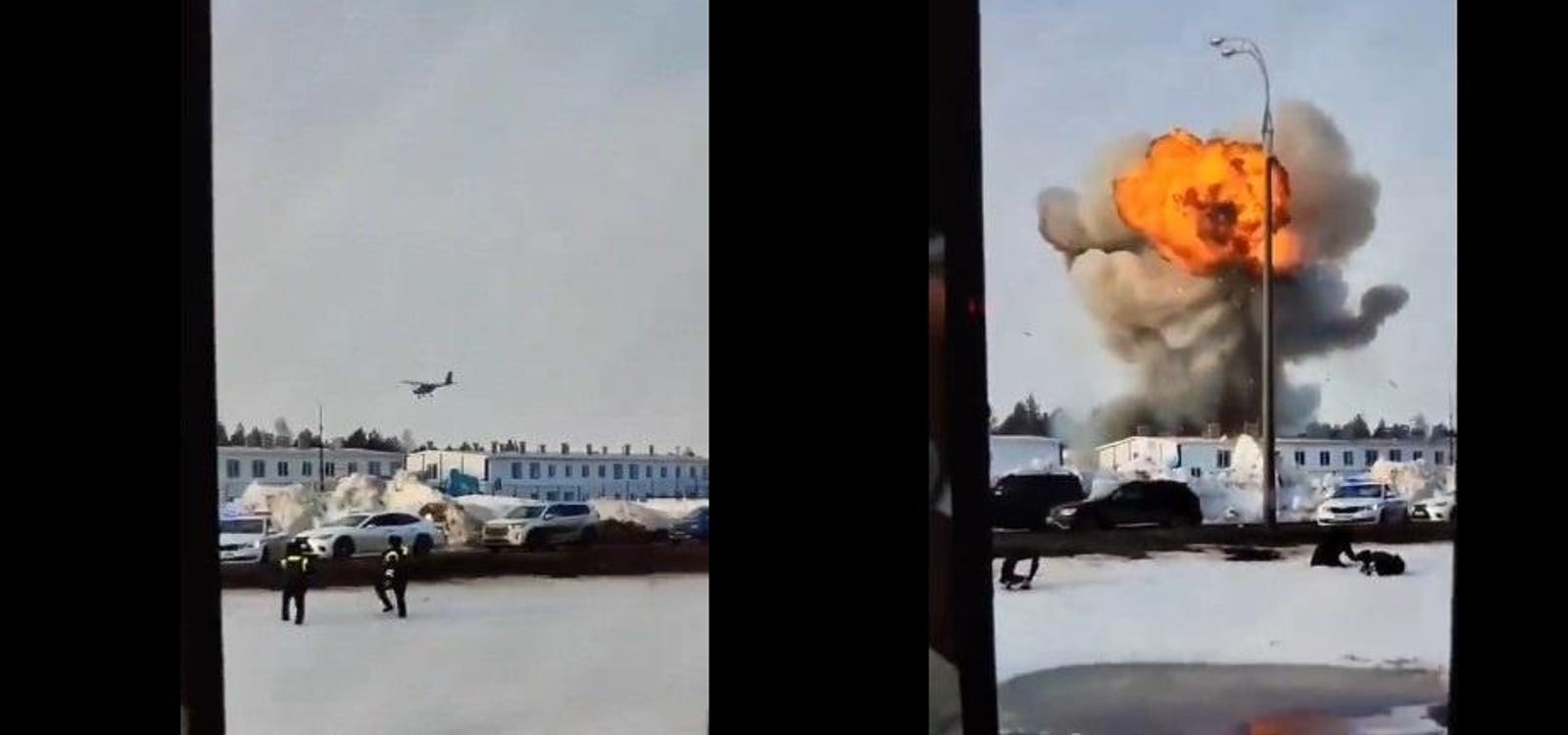In a sharp escalation of its drone campaign targeting strategic industries deep inside Russia, Ukraine seems to have fitted Cessna-style light planes with remote controls, packed them with explosives and flown at least one of them more than 600 miles to strike a Russian factory in Yelabuga, 550 miles east of Moscow.
Ironically, the Russian factory produces—you guessed it—drones.
Russians on the ground recorded the shocking scene as the light plane dove onto the sprawling Alabuga Special Economic Zone industrial campus, where workers assemble Iranian-designed Shahed drones that, just like Ukraine’s DIY Cessna-style drone, can range as far 600 miles with an explosive payload.



This is pretty embarrassing for Russian air defense. Though, I also wonder if they were hesitant to shoot down an unidentified aircraft after multiple cases of friendly fire bringing down VKS aircraft. I’m also amazed that there was seemingly no Electronic Warfare (EW) systems in the area to prevent remote control of drones. Sure, there are EW countermeasures, but this seems like a pretty significant failure that this drone could be flown in from that far away.
Having a massive landmass has been a huge boon to Russia historically, but we’re seeing the inverse now with all these long range precision guided munitions. They have too much land to cover with adequate air defense, it seems
maybe it wasn’t remote controlled as much as pre-programmed?
Seems probable yes. Although it would still require GPS to keep its heading which can be jammed
Commercial aircraft have IMUs that carefully measure acceleration to get its position, IMUs are more accurate and reliable than GPS so GPS is the backup system.
“dead reckoning” is the technical term for precalculated navigation, adjusting the path only from sensors like IMUs
(unless they used stuff like cameras and POI based navigation, but that seems unlikely)
I don’t think it’s correct to say normal planes use IMU more than GPS, they’re all complementary. GPS tells the general direction and the IMU helps keeping the plane stable (no sudden jerks to turn when the GPS drifts). And ground radar tells the plane when it’s too far off the path.
“Dead reckoning” as in “dead reckoning” as in “deduced reckoning”. It’s the same kind of navigating people have done on boats for millennia. You start from a known point and move in a specific direction at a known speed for a specific amount of time. Then you change your speed and/or direction for another specific amount of time. And so on. If you have the ability to do so then you update your known position along the way via known landmarks you might pass.
Yeah but the errors creep up, so if you don’t see the islands of hope after sailing for 18 days at speed x, you’re fucked :-)
That’s why you have several systems, like gps to periodically try to get a good signal, or manual override.
An alternative is terrain mapping. You look at the terrain bellow you and compare in a database. Tomahawks navigate that way.
That navigation system was originally designed for the US nuclear powered doomsday cruise missile which would have zoomed across the USSR at supersonic speeds, low altitude, spewing radiation as it goes and dropping the occasional nuke. It could have done this for days.
Given what they’ve done elsewhere I wouldn’t be surprised if it was 100% remote-piloted via satellite internet (most of their sea drones are controlled via Starlink, for instance) but in the case of fixed infrastructure, a smart fusion of GPS, IMU, and potentially video image matching for terminal guidance (these aren’t big bombs in the grand scheme of things and it’s important to hit the right part of a sprawling refinery or factory complex in order to knock it out for an appreciable amount of time) could overcome GPS jamming, and be well within the technical capabilities of the Ukrainian arms industry. TERCOM as implemented in the Tomahawk runs on early-80’s computing power, and it’s only gotten easier. Machine vision frameworks are widely available and well-understood software these days, and can run on fairly modest hobby hardware to boot.
I doubt an imu could have so little drift that it could hit a certain building though. I bet the gps just worked, I mean this was a place that people lived and used tech, not exactly an active warzone with gps jamming.
The IMU probably drifts by some small percentge but an intermittent GPS signal every few kilometers should ensure that it never gets too far off course.
But this thing a particular building at 600 miles. I doubt IMUs can be that good.
Right, totally forgot about that
They were busy jamming the European airspace
I heard they can stop nukes. I don’t believe it.
https://www.smithsonianmag.com/air-space-magazine/the-notorious-flight-of-mathias-rust-7101888/
While embarrassing, the environment in which that happened was entirely different. You had Regan and Gorbachev actively working to improve relations. And no one was actively trying to blow up Soviet infrastructure. You’d think the Russian air defenses would be a bit more sensitive to small aircraft coming from Ukraine in this environment.